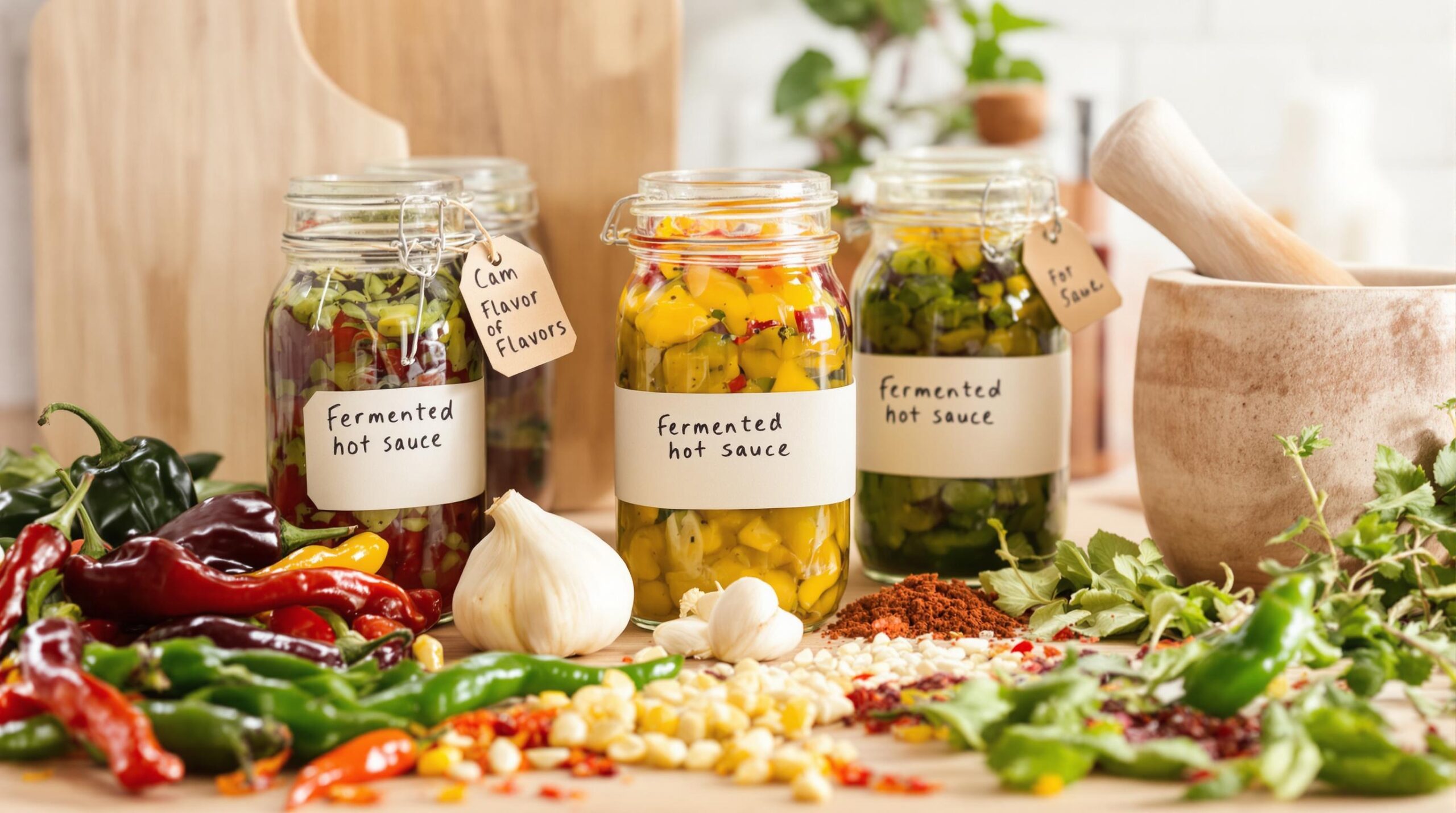Introduction: Understanding the Basics of Fermentation
Fermented hot sauce has become a staple in culinary circles due to its rich flavor profile and health benefits. Fermentation, a natural process where microorganisms transform ingredients, enriches foods with probiotics while enhancing flavors. This ancient preservation technique uses controlled conditions to ensure safety and quality. Fermented hot sauce is not just a condiment; it embodies culinary artistry and science.
Ingredients: Selecting the Right Peppers and Additives
The foundation of a great hot sauce is the pepper. Peppers vary in heat, flavor, and color, providing diverse options. Jalapeños, habaneros, and cayenne are popular for their distinct heat levels and flavor. Freshness is crucial, as fresher peppers contribute to a brighter taste. Adding garlic, onion, or fruits enhances depth, offering multiple flavor dimensions. Salt is essential for preserving and flavoring. It creates an environment where beneficial bacteria thrive.
Tools and Equipment: Setting Up Your Fermentation Station
A successful fermentation process requires specific tools: glass jars, fermentation weights, and airlocks. Glass jars prevent chemical interactions, making them perfect for fermentation. Fermentation weights submerge ingredients, preventing mold formation. Airlocks allow gases to escape while blocking air entry, maintaining anaerobic conditions essential for fermentation. Cleanliness is paramount; sterilize all equipment to avoid unwanted bacterial growth.
The Fermentation Process: Step-by-Step Guide
Step 1: Preparation of Ingredients
Thoroughly wash and dry all peppers and additional ingredients. Remove stems and slice peppers to your desired size. Smaller pieces ferment more evenly, accelerating the process.
Step 2: Creating the Brine
Dissolve salt in water to make a brine solution. This brine encourages the growth of beneficial bacteria while deterring harmful microbes. A typical ratio is 3% salt by weight of the water.
Step 3: Jar Assembly
Place sliced peppers and additional ingredients in a clean glass jar. Pour the brine over them, ensuring all ingredients are submerged. Use fermentation weights to keep everything submerged and covered.
Step 4: Sealing for Fermentation
Attach the airlock to the jar lid to provide a one-way gas vent. Store at room temperature, away from direct sunlight. After a few days, bubbling indicates active fermentation.
Step 5: Monitoring Fermentation
After one week, taste your ferment daily to monitor flavor development. Fermentation typically takes one to four weeks, depending on temperature and desired flavor.
Understanding the Science: Beneficial Microorganisms at Work
Microorganisms drive the fermentation process, converting sugars into lactic acid. Lactic acid acts as a natural preservative while adding tanginess. The controlled environment promotes the growth of beneficial bacteria while suppressing harmful strains. Fermentation produces probiotics that support digestion and boost immunity. Understanding microbial roles enhances the ability to adjust the process for desired outcomes.
Troubleshooting: Addressing Common Fermentation Issues
Occasionally, fermentation may not proceed as expected. Mold growth occurs if ingredients are not fully submerged. Regularly checking liquid levels and weights can prevent this issue. Off-odors might arise from improper sanitation practices. Comprehensive cleaning and sterilization of tools avoid contamination. If fermentation appears sluggish, warm the environment slightly to invigorate bacterial activity.
Bottling and Storing: Ensuring Longevity and Flavor
When the sauce reaches the desired flavor, it’s time to bottle it for storage. Carefully remove any remaining fermentation weights and strain the solids from the liquid. Blend the solids with some liquid for a smooth sauce, adjusting consistency as preferred. Bottle in sterilized containers, ensuring a tight seal to preserve flavor. Store in the refrigerator to slow further fermentation and maintain quality.
Enhancing Flavor: Creative Variations and Additions
Unique variations can elevate your hot sauce. Adding smoked peppers introduces complexity through subtle smokiness. Fruits like mango or pineapple can provide sweetness that balances the sauce’s heat. Experiment with herbs like cilantro or spices like cumin for added nuances. Each variation offers a personalized touch, showcasing creativity and culinary knowledge.
Pairing Hot Sauce: Elevating Culinary Creations
Homemade fermented hot sauce complements myriad dishes, from scrambled eggs to grilled meats. Its complexity enhances soups, stews, and marinades. A few drops in salads or tacos invigorate with zest and heat. Balance is key when pairing; consider the dish’s flavors to avoid overpowering them. Experimenting with different combinations leads to delightful culinary revelations.
Conclusion: The Joy of Homemade Fermentation
Mastering homemade fermented hot sauce empowers culinary enthusiasts, providing control over flavor, heat, and quality. One can craft sauces that invigorate and inspire by understanding and applying fermentation principles. The experience of creating something so flavorful from simple ingredients brings satisfaction and culinary joy. Whether for personal enjoyment or sharing with friends, homemade hot sauce is a testament to the fusion of tradition and innovation in cooking.
Learning and experimenting with fermentation opens a world of flavors and health benefits. Dive into this journey and discover the joy of homemade fermented hot sauce. You’ll appreciate food’s transformative power once you’ve mastered this culinary art.

